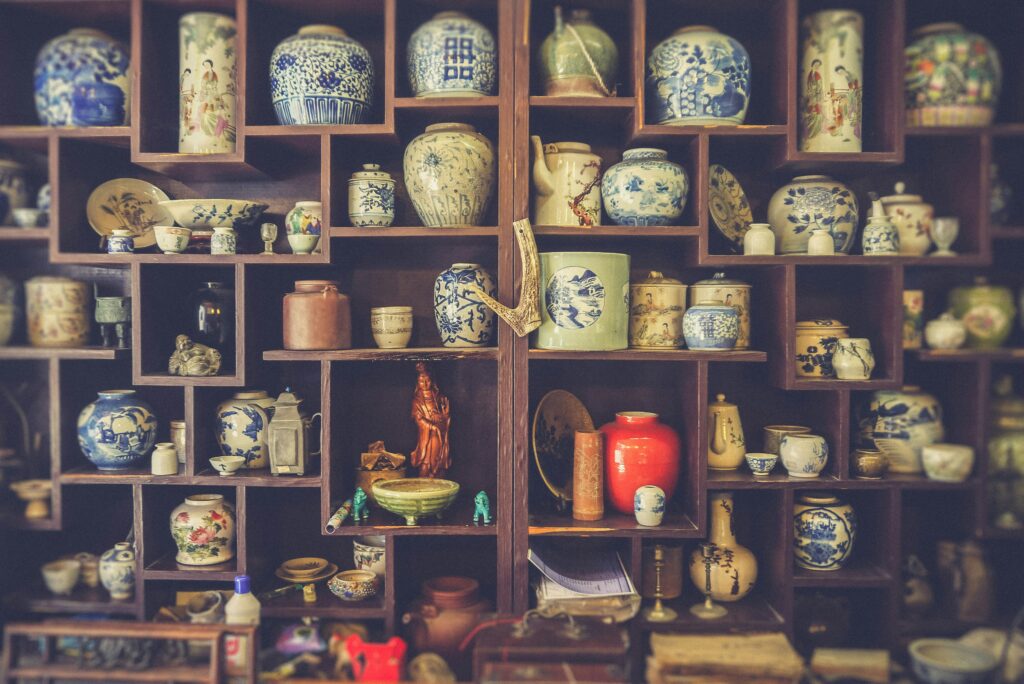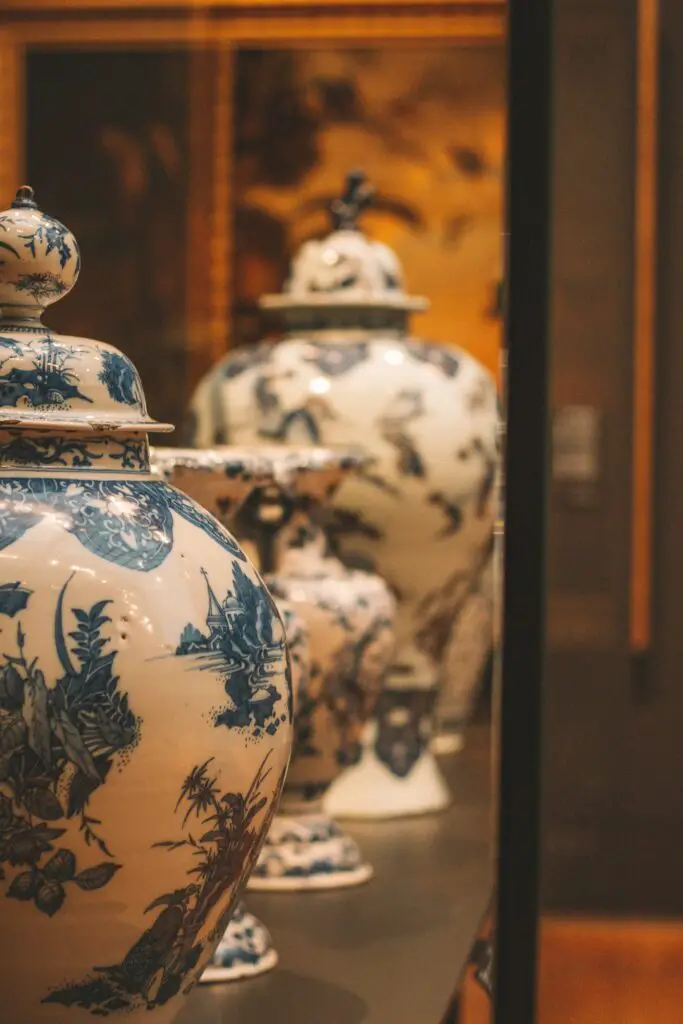If you’re an antique lover, you know how important it is to store your cherished items carefully. Whether it’s a delicate porcelain figurine, a vintage wardrobe, or a collection of old books, finding the right storage solutions can be tricky—especially when space is limited. Antiques require a special touch to ensure they stay in pristine condition while maximizing the space you have. Here are some genius tips to keep your antiques safe and organized without sacrificing style or functionality.
1. Invest in Sturdy Shelving Units

Shelving is your best friend when space is tight. Opt for sturdy, adjustable shelving units that can hold weighty items like vintage books, clocks, or sculptures. Make sure the shelves are positioned away from direct sunlight or moisture-prone areas to avoid damage from UV rays or humidity. Bonus: You can still display your pieces beautifully while keeping them safe!
2. Use Acid-Free Tissue Paper for Delicate Items
When storing fragile antiques like porcelain, crystal, or textiles, wrapping them in acid-free tissue paper is a must. Regular paper or plastic can lead to discoloration or moisture buildup, but acid-free tissue protects delicate surfaces without causing chemical reactions. For items like old photographs, documents, or fabrics, this type of paper is a lifesaver.
3. Store Fragile Items in Stackable Plastic Bins
While cardboard boxes are tempting for their affordability, stackable plastic bins are the safer choice. They’re sturdy, offer protection from dust and moisture, and are easy to label. Choose bins that have dividers or customizable compartments to keep fragile items like antique glassware or small trinkets from bumping into each other.
4. Utilize Under-the-Bed Storage
If closet space is limited, under-the-bed storage can be a game-changer. Low-profile bins or drawers that fit neatly under your bed are perfect for smaller antiques like textiles, jewelry boxes, or framed photographs. Be sure to line these containers with soft fabric or bubble wrap to protect your treasures from scratches.
5. Climate Control Is Key
Temperature and humidity fluctuations can wreak havoc on antiques, especially wood furniture, paintings, and textiles. If you’re serious about protecting your investments, consider using a climate-controlled storage unit or setting up a dehumidifier in the room where you store your antiques. The ideal climate is around 60-70 degrees Fahrenheit with a humidity level of about 40-50%. This prevents wood from warping and fabrics from molding.
6. Hang Vintage Mirrors and Artwork Properly
Mirrors and paintings can take up valuable floor or shelf space, so why not hang them? Just make sure you’re using proper hardware. Avoid wire hangers, as they can put undue stress on the frame. Instead, opt for sturdy picture hangers or D-rings to evenly distribute the weight. And don’t forget to check that they’re hung away from direct sunlight to prevent fading!
7. Protect Furniture with Custom Covers
Furniture can be tricky to store safely, especially if you don’t have space to use it immediately. Custom-made dust covers can help protect antique chairs, tables, and cabinets from dust, dirt, and potential scratches. If custom covers aren’t in your budget, cotton or linen sheets work just as well. Just avoid plastic, as it traps moisture and can cause damage over time.
8. Store China Vertically

If you’re tucking away antique plates or fine china, stack them vertically rather than in piles. This may sound counterintuitive, but standing them on their edges (in a dish rack or a specialized box) reduces the risk of chipping and breakage. Be sure to place padding, like bubble wrap or foam, between each piece for added security.
9. Use Archival Boxes for Paper Items
Old documents, maps, postcards, and photographs should never be tossed into regular boxes or albums. Archival storage boxes, which are acid-free and designed for preserving paper, are a great investment. Pair them with acid-free sleeves or folders to ensure these delicate items stay protected from light and air.
10. Optimize Wall Space with Hanging Baskets
For smaller collectibles, such as antique bottles, figurines, or tools, hanging wire baskets or shelving along your walls is a great way to save space and keep things organized. You’ll be able to easily see and access your pieces without them cluttering up your countertops or tables.
11. Use Furniture as Dual Storage
Antique furniture often comes with storage opportunities built in! Think of old wardrobes, chests, or sideboards—they can hold much more than you might expect. Use these pieces to store smaller antiques while keeping the overall aesthetic intact. If the furniture has drawers, line them with felt or velvet to keep items like jewelry or silverware from scratching.
12. Label Everything
It’s easy to lose track of what’s stored where, especially if you have a lot of small, valuable items tucked away. Labeling boxes and shelves will help you stay organized. You can even keep a digital inventory on your phone or computer, noting what each box or bin contains. This will save you time (and headaches) when you’re searching for that special piece.
13. Use Hanging Racks for Vintage Textiles
Vintage quilts, tapestries, or clothing should be stored in a way that avoids folding, as creases can become permanent over time. If possible, hang them on padded hangers or a textile rack in a cool, dry room. This will help preserve the fabric and keep it in better condition than if it were crammed into a drawer or bin.
14. Create a Rotating Display
If you want to keep your antiques on display but worry about space or damage, consider rotating them! Every few months, swap out the items you’re showing for others you’ve had stored away. This allows you to enjoy all your treasures while keeping them in safer, climate-controlled storage for part of the year.
15. Use Silica Gel Packets to Control Moisture
Small silica gel packets are great for absorbing moisture and preventing mold growth, especially if you’re storing antiques in a basement or attic. Toss a few into boxes with textiles, papers, or other sensitive items to keep them dry. Just make sure the packets don’t touch the antiques directly.
16. Keep Away from Direct Sunlight
Sunlight is the enemy of many antiques, especially wood furniture, textiles, and artwork. Over time, UV rays can cause fading, cracking, and discoloration. When storing your items, choose a cool, dark place away from windows. If you must display them in a sunny room, consider investing in UV-protective window film.
17. Make Use of Vertical Space
Don’t just think horizontally when it comes to storage. Install high shelves or hanging hooks to maximize vertical space in your storage room or closet. Tall cabinets with multiple shelves can hold an impressive number of antiques without taking up much floor space, leaving room for larger items like furniture.
18. Keep an Eye on the Airflow
Stale air can encourage the growth of mold or mildew, which can ruin precious antiques. Make sure your storage space has good ventilation or, if needed, use a small fan or air purifier to keep the air circulating. This is especially important for items stored in basements, attics, or older homes.
19. Move Items Gently and Use Proper Lifting Techniques

When you need to move or rearrange your antiques, handle them with care. For heavy items, always lift from the base, not the top, and avoid dragging anything across the floor. Even a minor scratch can reduce the value or aesthetic of a beloved piece. Also, be mindful of lifting techniques to keep your back safe! Lift with your legs, and do not lift with your back, especially while bent.
By following these storage tips, you can keep your precious antiques safe, well-organized, and in tip-top condition—no matter how much (or little) space you have. Your collection is not only a part of history, but it’s also a piece of your personal story, so keeping it in pristine condition is worth the effort.


